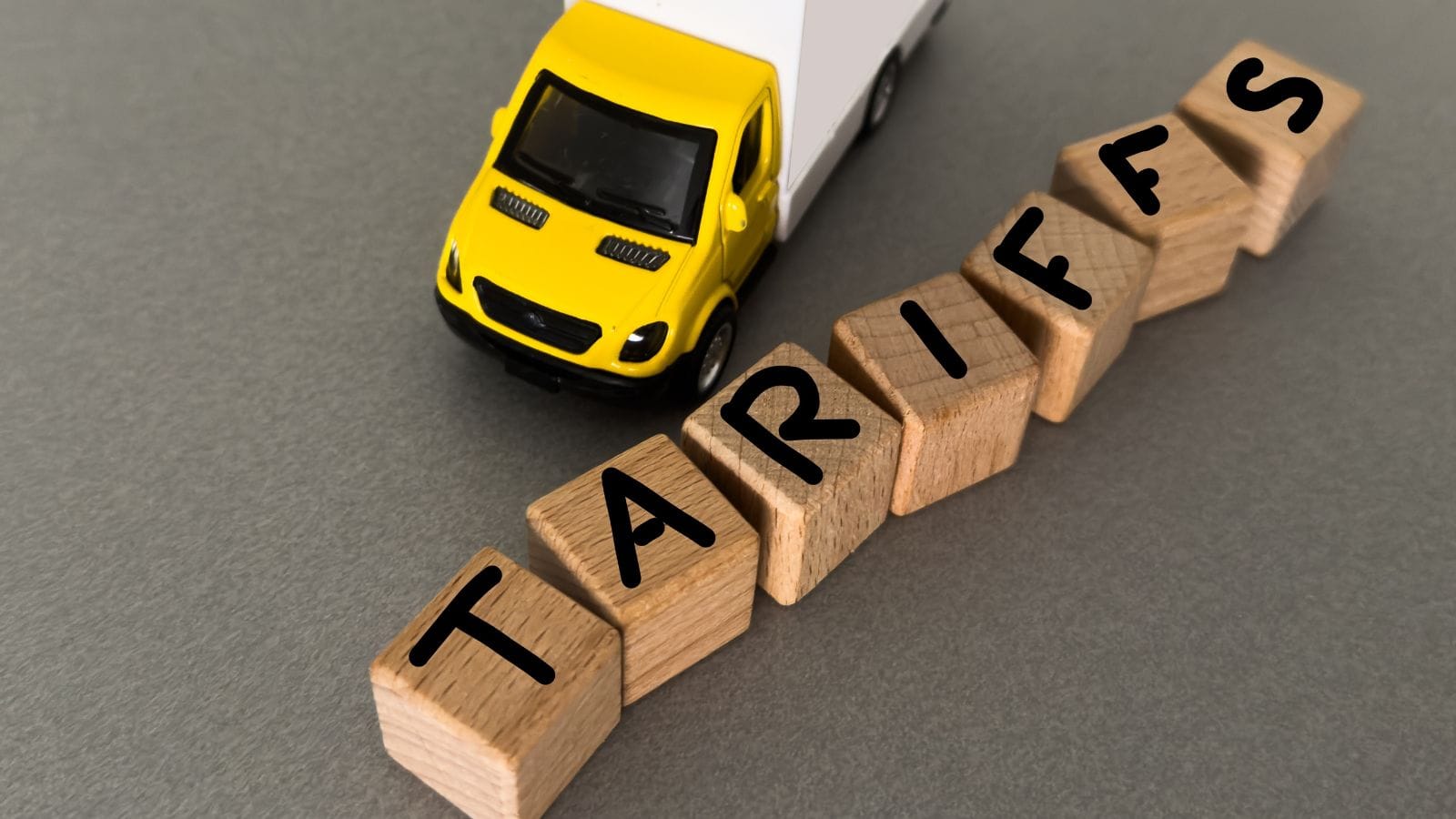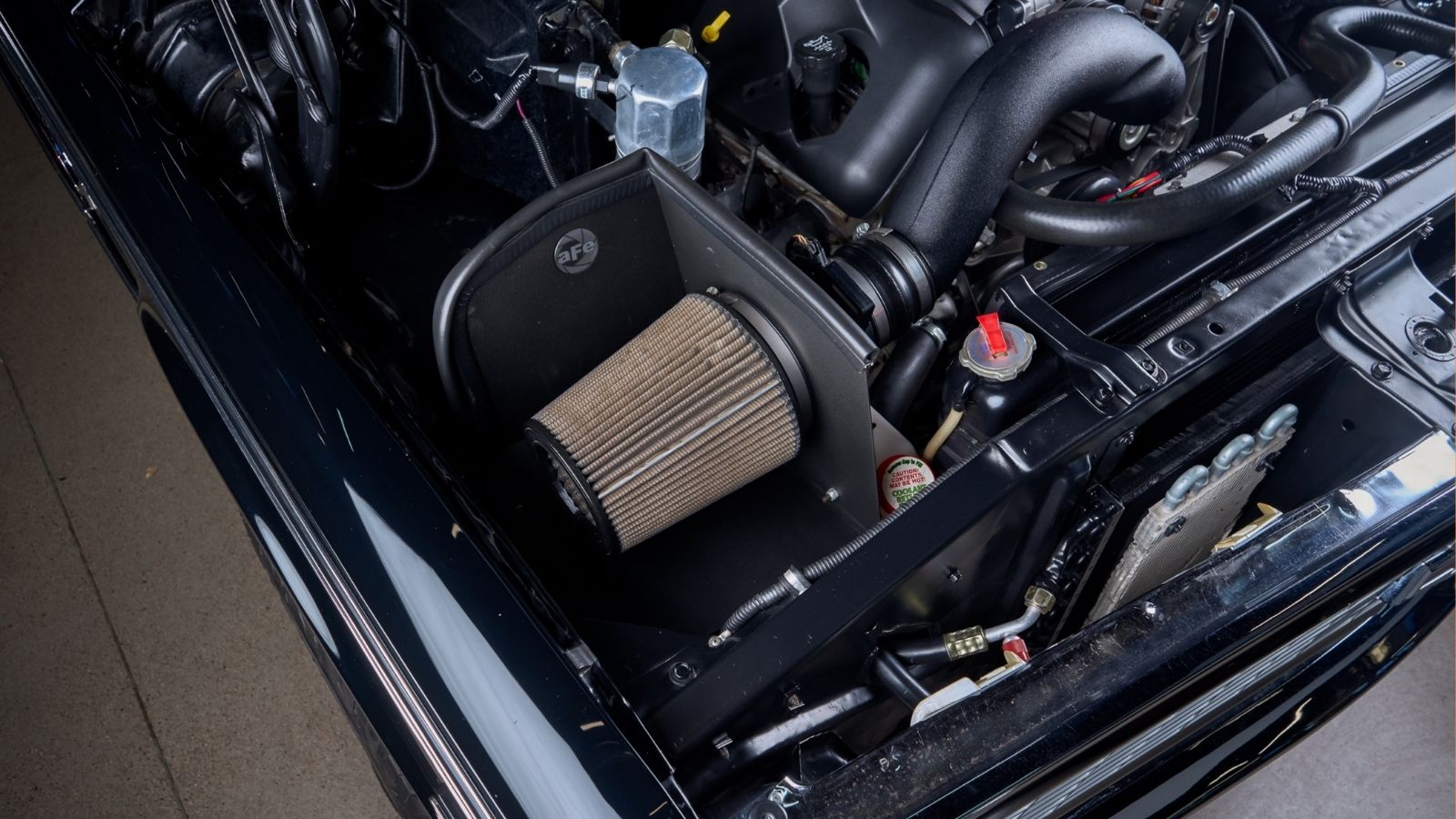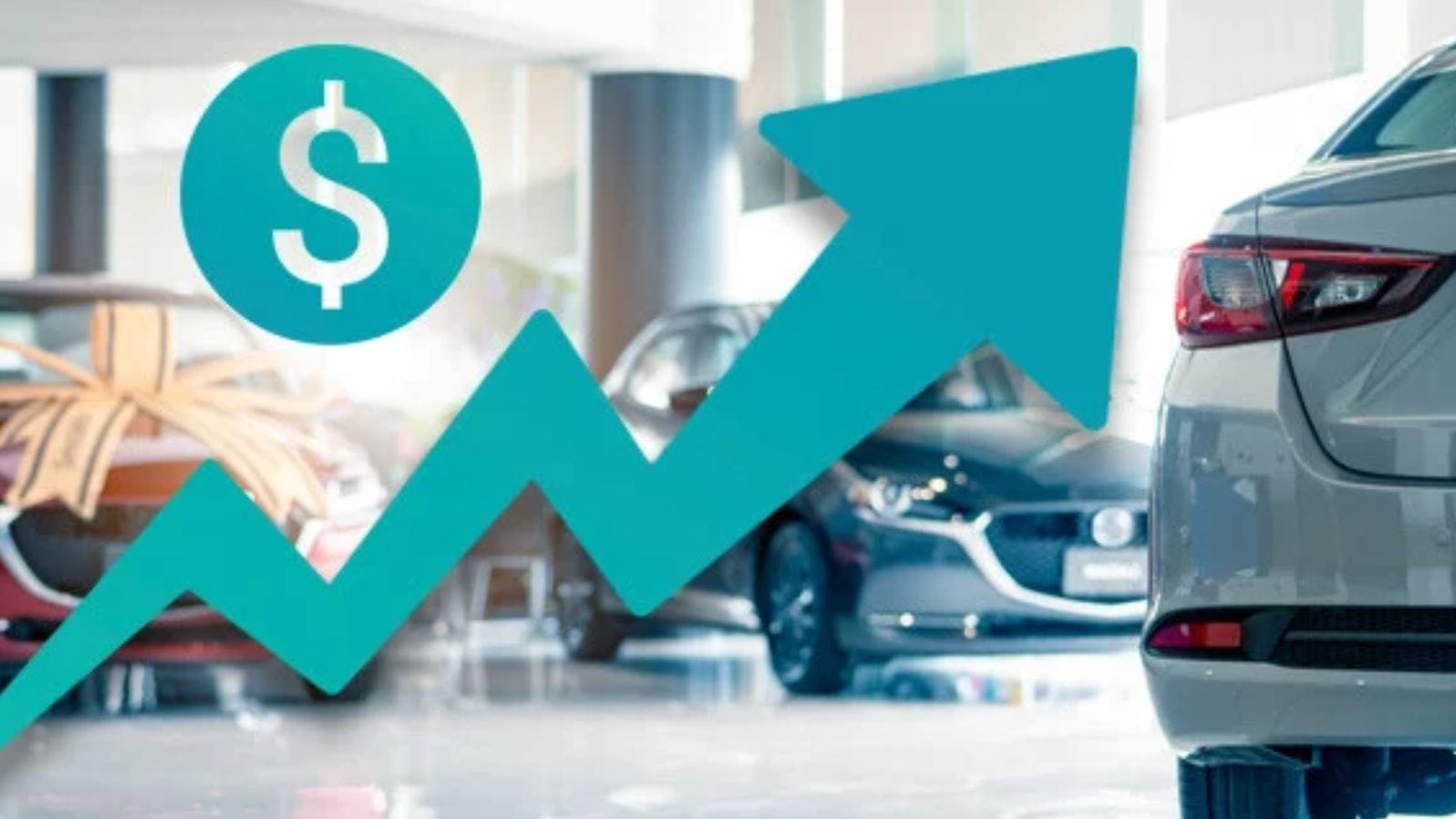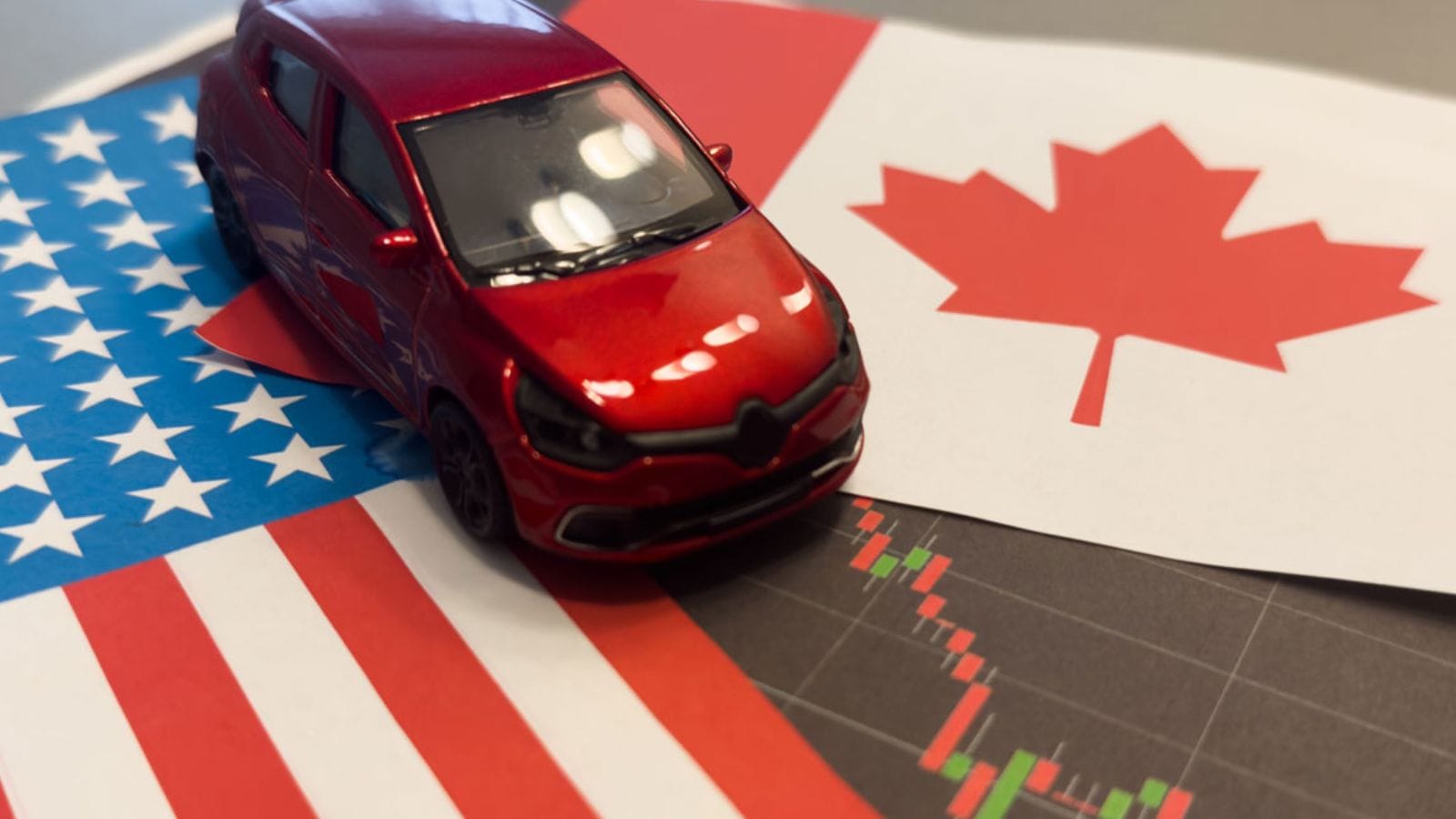Across Canada, family car shopping has hit the brakes. Soaring interest rates, volatile pricing, and the looming threat of auto tariffs have all contributed to widespread hesitation. What used to be a simple matter of upgrading a minivan or SUV has now become a wait-and-see game. From rising insurance premiums to confusing EV policies, families are holding back, and for good reason. Here are 25 reasons Canadian families are delaying car purchases right now:
Interest Rates Are Through the Roof

Sky-high interest rates are putting serious pressure on family budgets. A few years ago, a zero-percent financing deal wasn’t uncommon, but now, rates of 6% or more are the norm. That means families are paying thousands more in interest over the life of a loan. Combined with higher vehicle prices, the math doesn’t work for many Canadians. Monthly payments that once hovered around $400 are now pushing $700 or higher, even for modest vehicles.
Trade-In Values Are Dropping Fast

For a while, trade-in values were surprisingly strong, helping families upgrade without breaking the bank. But that window is closing quickly. As supply chain issues ease and used car inventories rise, trade-in offers are plummeting, often by thousands of dollars. A vehicle that fetched $25,000 last year might now be worth just $18,000. That’s a painful gap for families counting on their old ride to offset the cost of a new one, and with equity shrinking and dealerships tightening offers, many Canadians are choosing to hold onto their current cars longer than planned and watch the market shift.
EV Incentives Are Confusing or Expiring

Electric vehicles were supposed to be the future, but for many families, EV incentives are anything but clear. Federal rebates have remained static, and provincial offers vary wildly. Ontario families get nothing, while Quebec drivers enjoy generous support, but that could change any day. Plus, many new EV models are now priced just above rebate eligibility thresholds, making the deals feel hollow. With Ottawa and provincial governments reviewing policies and automakers adjusting pricing monthly, it’s no surprise families are hitting pause.
Car Insurance Premiums Are Surging

Across the country, premiums have spiked due to inflation, rising repair costs, and climate-related claims. Even drivers with clean records are seeing annual increases of 10% or more. For families with teens or young drivers, the hit is even worse. In some regions, insurance for a mid-range SUV can top $3,000 a year. When you add that to financing and fuel, the total cost of ownership is enough to make many households reconsider.
Auto Tariff Uncertainty Is Scaring Buyers Off

The threat of new tariffs on imported vehicles and parts has cast a dark cloud over the auto market. Families who would normally shop for cross-border deals or affordable U.S.-assembled models are waiting in limbo, and automakers, unsure of future costs, are limiting supply or quietly adjusting pricing. Dealers aren’t sure which vehicles will be most affected, and buyers don’t want to end up with a car that’s $5,000 more expensive a month later, or worse, a resale lemon. Until Canada and the U.S. clarify trade policies, many families are simply choosing to wait out the chaos.
New Cars Aren’t Much Better Than Their Old Ones

Today’s new vehicles are not offering game-changing improvements, at least not enough to justify steep prices. For many Canadian families driving 5- to 10-year-old cars, the performance, fuel economy, and safety features still hold up. With even basic crossovers now pushing $40,000, the cost-to-benefit ratio feels off. If the upgrade doesn’t drastically improve their daily commute, family road trips, or gas bills, families aren’t biting.
Inventory Still Isn’t Fully Recovered

Despite progress since the peak of supply chain chaos, dealership lots still feel empty to many shoppers. Popular family models, like the Toyota RAV4 Hybrid or Honda CR-V Touring, often require pre-orders or long waits. Families cannot afford to settle for less suitable trims just because they’re available, and for those needing a new car now due to growing kids or relocation, the lack of choice is a real deterrent. Many would rather wait for a restocked inventory than pay full price for a vehicle that is not their first or second choice.
Leasing Isn’t the Safe Option It Once Was

Leasing used to offer predictable costs and the comfort of always driving a newer vehicle. But with interest rates rising and residual values in flux, many leasing deals no longer feel like smart moves. Canadian families are seeing monthly lease payments that rival or exceed loan payments, with fewer long-term benefits. Plus, lease-end surprises like excess wear charges or lower buyout values add stress to the mix. Without the flexibility or value leasing once provided, many households are pausing decisions altogether, waiting for the math to make sense again before signing anything.
Repair Shops Are Keeping Older Cars on the Road

Thanks to better parts availability and experienced mechanics, Canadian families are finding it easier to keep their older cars running. Whether it’s a trusted local shop or a growing network of mobile mechanics, minor repairs and maintenance now seem like a safer investment than a new car loan. A $1,200 brake job is far less intimidating than a $48,000 SUV commitment. Many parents are choosing to stretch the lifespan of their vehicles until prices settle, confident that another year or two of driving the family’s aging minivan won’t hurt.
Used Cars Are Still Overpriced

Used vehicle prices may have dipped slightly from their 2022 peaks, but they’re still high, especially for models with decent mileage and good reliability records. A 2019 Toyota Highlander can still command over $35,000 in many markets. For families trying to save money by going pre-owned, the sticker shock is real, as these high prices often come without warranties or certified inspections. Instead of taking a gamble on a used vehicle that feels overpriced, many families are simply holding back, hoping prices will fall further or that a new car incentive will tip the scale.
Family Budgets Are Stretched Thin Already

Between groceries, mortgages, child care, and utilities, Canadian families are dealing with mounting monthly expenses, and a new car doesn’t fit the budget. A vehicle that adds $800 or more a month in payments, insurance, and maintenance is simply unaffordable for many. Even two-income households are hesitating, especially with talk of a potential recession or job market cooling. Financial advisors are urging caution, and families are listening. Until inflation eases or wages catch up, the idea of adding another major expense to the household balance sheet is firmly on hold.
Resale Values Are Too Unpredictable

For families thinking long-term, the resale value of a new vehicle plays a big part in the buying decision. But in today’s market, depreciation trends are all over the map. EV values fluctuate wildly, and even gas-powered cars are seeing steeper-than-expected drops. Nobody wants to buy a $50,000 vehicle today only to find out it’s worth half that in three years. Without reliable resale projections, especially with tariffs and regulations looming, many Canadians are choosing to wait.
Fuel Costs Remain a Wildcard

While gas prices have dipped from their record highs, volatility remains. Canadian families are wary of buying a vehicle that guzzles fuel if prices spike again, especially with cross-country vacations or long commutes in mind. At the same time, EV charging infrastructure still lags in many regions, making a full switch risky. This in-between moment, with gas uncertain and EVs not yet fully practical, has many families opting to wait as they would rather see how the energy market stabilizes before choosing a vehicle that locks them into one fuel type or another for the next decade.
Tech Features Are Advancing Too Quickly

Every new model year brings fresh infotainment systems, semi-autonomous driving aids, and enhanced safety tech, but that’s precisely the problem. Families are hesitant to spend big on a car that could feel outdated in just two years. Many are watching tech evolve rapidly and worrying they’ll be stuck with last-gen systems that lack over-the-air updates or compatibility. This primarily affects younger buyers who want smart integration across devices.
EV Charging Still Feels Inconvenient

Even with rising interest in electric vehicles, Canadian families are finding the charging experience too inconsistent. In suburban and rural areas, public chargers are scarce or unreliable. Apartment dwellers face even more hurdles with limited access to home charging, and fast chargers often come with long wait times or technical glitches. Until EV infrastructure is on par with gas stations, families aren’t willing to leap. Many are interested in making the switch, but not if it adds stress to school runs, hockey practice, or road trips.
Bank Loan Requirements Are Tighter

Financing a vehicle is not as simple as it used to be. Many Canadian banks have tightened their lending criteria, demanding higher credit scores, more income documentation, and larger down payments. For families juggling mortgages, student loans, and rising costs of living, qualifying for a reasonable auto loan has become a challenge. Some are being offered sky-high interest rates, while others are getting rejected outright, resulting in more people holding off, opting to repair or refinance their existing cars instead of diving into an uncertain and potentially costly financing experience.
Cross-Border Shopping Is Off the Table

For years, Canadian families looking for savings could head south and buy a car in the U.S., especially with a strong Canadian dollar. But with tariffs, increased paperwork, and vehicle import restrictions tightening, that option has all but disappeared. Many U.S. dealers have even stopped selling to out-of-country buyers, which has left Canadian consumers with fewer options and little pricing flexibility. With no workaround for inflated local sticker prices, families are increasingly deciding to sit tight and delay purchases, hoping domestic prices cool off or incentives improve before they commit to a new ride.
Loan Terms Are Getting Dangerously Long

To make rising monthly payments more manageable, many Canadian families are being offered loans stretching 84 to 96 months. While the lower monthly cost seems appealing, buyers are waking up to the long-term financial risks, higher interest paid over time, and longer periods of negative equity. These ultra-long terms can trap families in upside-down loans, especially if the vehicle depreciates faster than expected. With this growing concern, many are choosing to wait.
Trade-In Offers Are Lowballing Owners

Canadians hoping to offset a new car’s price with their old one are finding the math isn’t working out. Dealerships are offering far less than expected for trade-ins, even for popular models with good service history. Some families are walking into dealerships expecting $15,000 and walking out with a $9,000 quote. With the used market still overpriced and dealer margins razor-thin, sellers aren’t negotiating. That disconnect between what families think their cars are worth and what dealers offer is leading many to hold onto what they have, rather than sell low and buy high.
Everyone’s Waiting for End-of-Year Incentives

Canadian families know that if they can hold on a bit longer, better deals might be around the corner. Year-end clearance sales, dealer incentives, and manufacturer rebates appear in the fall and winter months, especially when inventory piles up. In today’s high-cost environment, waiting a few extra months could mean thousands in savings. Families are also hoping that interest rates stabilize or drop slightly by year’s end. This strategic pause, driven by timing and patience, has led many to postpone purchases until at least the fourth quarter.
More Families Are Sharing a Single Vehicle

In a shift driven by necessity and practicality, many Canadian households are choosing to downsize to one car rather than buy another. With more people working from home, commuting less, or carpooling, the second vehicle has become less essential. Insurance, maintenance, and fuel savings are substantial, and families are learning to coordinate around a single car. This has resulted in fewer purchases. Even in busy households with teens learning to drive, the decision to make do with one vehicle is often framed as a smarter financial move until prices stabilize or more incentives emerge.
Uncertainty Around Battery Longevity and EV Resale

As more electric vehicles hit the market, questions about long-term battery health and resale value are causing hesitation. Canadian families are rightly cautious about spending $60,000 on an EV if its range could drop dramatically after a few winters. Replacing a degraded battery is often prohibitively expensive, and the used EV market is still finding its footing. Until more data is available on how EVs age in Canadian climates, many buyers are postponing their purchase, as they would rather see how first-generation owners fare than risk being early adopters stuck with vehicles that depreciate faster than expected.
Dealer Fees and Extras Are Out of Control

What starts as a reasonable base price quickly balloons when Canadian families get to the dealership. From documentation fees to tire protection packages, rust-proofing, and inflated freight charges, the extras can add thousands to the final bill. Worse, many of these fees are non-negotiable, especially in low-inventory markets. Faced with sticker shock and hidden costs, families are increasingly walking away and choosing to postpone their purchase rather than overpay for a vehicle that should have been affordable in the first place.
Fear of Buying the “Wrong” Vehicle

With the market in flux, Canadian families are nervous about making the wrong long-term choice, as questions about hybrids holding their value, EV range improving next year, and gas-powered cars losing demand altogether circle around. These are high-stakes questions for anyone buying a vehicle expected to last 8-10 years. Rather than gamble, many families are taking a wait-and-see approach. They want clarity on emissions regulations, government rebates, and technology standards before committing to one drivetrain or model.
Everyone’s Still Hoping Prices Drop Again

After the chaos of pandemic-era markups, many Canadian families are clinging to the hope that prices will normalize. Some remember pre-2020 base models under $25,000 and refuse to accept today’s inflated MSRPs. The belief that better deals are just around the corner, whether from tariffs easing, interest rates falling, or increased supply, has created a psychological barrier to buying now. It’s a kind of buyer’s stubbornness, rooted in principle and optimism. Until reality proves them wrong or circumstances force their hand, many Canadians are simply waiting for the price pendulum to swing back in their favor.
21 Products Canadians Should Stockpile Before Tariffs Hit

If trade tensions escalate between Canada and the U.S., everyday essentials can suddenly disappear or skyrocket in price. Products like pantry basics and tech must-haves that depend on are deeply tied to cross-border supply chains and are likely to face various kinds of disruptions
21 Products Canadians Should Stockpile Before Tariffs Hit
